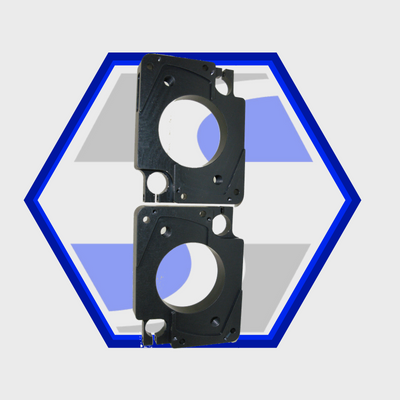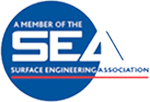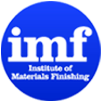Aluminium Finishing Options

.png)
.png)
Aluminium is one of the most widely used materials for a wide number of commercial and industrial applications. This is because it is a lightweight material that can be readily melted, cast, formed and machined into whichever form is required and is 100% recyclable with no downgrading of its qualities. Aluminium is the third most abundant element after Oxygen and Silicon and the most abundant metal on the Earth’s crust and yet despite this, wide scale production of Aluminium did not start until 1888 and at one time Aluminium was more valuable than Gold. One of the most noticeable attributes of Aluminium is a naturally occurring protective Oxide layer, and there are a number of different methods to extend this further and increase the wear and corrosion resistance of parts. Here is an overview:
Sulphuric Acid Anodising – Often referred to as just ‘Anodising’ or even ‘Natural Anodising’ this is the most popular process for Aluminium components. Parts are immersed into a vat containing a dilute Sulphuric Acid solution promoting oxidation onto the surface. A layer will form both above and below the surface and this usually ranges from 5-25 microns. The Oxide layer is porous in nature and can be readily dyed as long as this layer is above 10 microns thick. Sulphuric Anodising is resistant to oxidation, scratches and mild abrasion. It provides a good level of corrosion resistance but will be attacked by harsh chemicals. Silchrome offer Clear, Black and Red anodising and can provide other colours on request.
Chromic Acid Anodising – A similar process as above only utilising a different electrolyte, Chromic Acid Anodising produces a thin film Oxide layer between 1-10 microns. The layer that is produced is relatively soft and so offers little wear resistance and is not necessarily suitable as a standalone process but most often acts as a base for painting/coating. The main advantage of Chromic Acid Anodising is its high level of corrosion resistance and low resistance to electricity making it suitable for electronic applications.
Hard Anodising – In this process, components are immersed into a Sulphuric Acid solution as with Natural Anodising only here the electrolyte has a much higher concentration of Acid and the process is carried out at a high voltage and lower temperature. The result of this is a much thicker Oxide layer is produced up to 100 microns and more. The thicker this layer is the greater the wear resistance will be and this will also increase the components’ electrical resistivity making it a suitable process for barrier parts within electrical systems. Where Natural Anodising is often used for decorative applications, Hard Anodising is much more of a functional process.
Alocrom – Also known as Alodine in America, this process is similar in nature to Anodising in that it forms both above and below the surface but occurs through a Chromate Conversion rather than using Sulphuric Acid. This produces a thin film layer between 2-5 microns thick that provides a good level of corrosion, oxidation and water resistance. As a thin film it does not provide much wear resistance but due to its Hexavalent Chrome content does have small ‘self healing ‘ properties on surface scratches. Alocrom has an extremely low electrical resistance and is sold under various brand numbers the two most popular being; Alocrom 1000 which is a clear coating specified for it’s low electrical resistance and Alocrom 1200 which is golden yellow in appearance and provides more corrosion resistance.
Iridite NCP – Iridte NCP is a Chrome free passivation process for Aluminium. This is non-electrolytic in nature and the process involves the immersion of components into an acidic solution where a coating is formed through a chemical reaction with the base metal. Iridite has a negligible thickness on the surface of components and provides excellent adhesion for paints and powder coating. Iridite NCP provides increased corrosion resistance, can operate at high temperatures and has a good level of electrical conductivity. Its major advantage though is it’s capable of doing all this whilst meeting ELV, RoHS and WEEE standards, making it an increasingly popular choice.
The life expectancy of Aluminium components can be extended through the use of metal finishing process and Silchrome offer all of the above at our modern facility in Leeds. We are fully ISO 9001 and 14001 accredited and can guide you as to which finishing process is right for your application.




